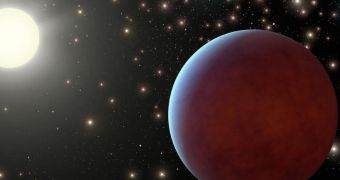A team of astronomers at the Georgia Institute of Technology (Georgia Tech) and the Harvard-Smithsonian Center for Astrophysics (CfA) announce the first discovery of extrasolar planets orbiting stars that are a part of a cluster.
The discoveries were made using the 1.5-meter Tillinghast telescope at the Smithsonian Astrophysical Observatory's (SAO) Fred Lawrence Whipple Observatory, near Amado, Arizona. The newly-discovered exoplanets are called Pr0201b and Pr0211b.
Astronomers focused their efforts on an open star cluster called Beehive, which features stars that were born from the same, massive cloud of dust and gas, and therefore share similar chemical properties.
Thus far, the NASA Kepler Telescope and other observatories have confirmed more than 780 exoplanets, and discovered an extra 2,300+ candidates. Yet, none of these companions were discovered to orbit members of a star cluster before.
What this study demonstrates is that exoplanets can indeed form from their respective protoplanetary disks even in dense stellar environments, where cosmic fireballs influence each other heavily.
The research group, which was founded by NASA, says that neither of the two worlds is habitable. It adds that their skies are more luminous than our own, given the huge number of stars in the cluster.
According to measurements available to date, both exoplanets are hot Jupiters, which means that they are about the size of our solar system's largest gas giant, but that they orbit closer to their parent stars than Mercury does to the Sun.
This increases their surface and atmospheric temperature levels to hundreds of degrees, and forces them to always point the same face towards their stars. This is called tidal locking, a phenomenon visible on the Moon as well, in respect to Earth.
Beehive is a relatively small cluster, since it features only about a 1,000 stars, which are only loosely bound to each other gravitationally. Most of the objects it contains were born at around the same time.
“We are detecting more and more planets that can thrive in diverse and extreme environments like these nearby clusters,” NASA Origins of Solar System Program astrophysicist Mario R. Perez says.
“Our galaxy contains more than 1,000 of these open clusters, which potentially can present the physical conditions for harboring many more of these giant planets.” he adds.

 14 DAY TRIAL //
14 DAY TRIAL //